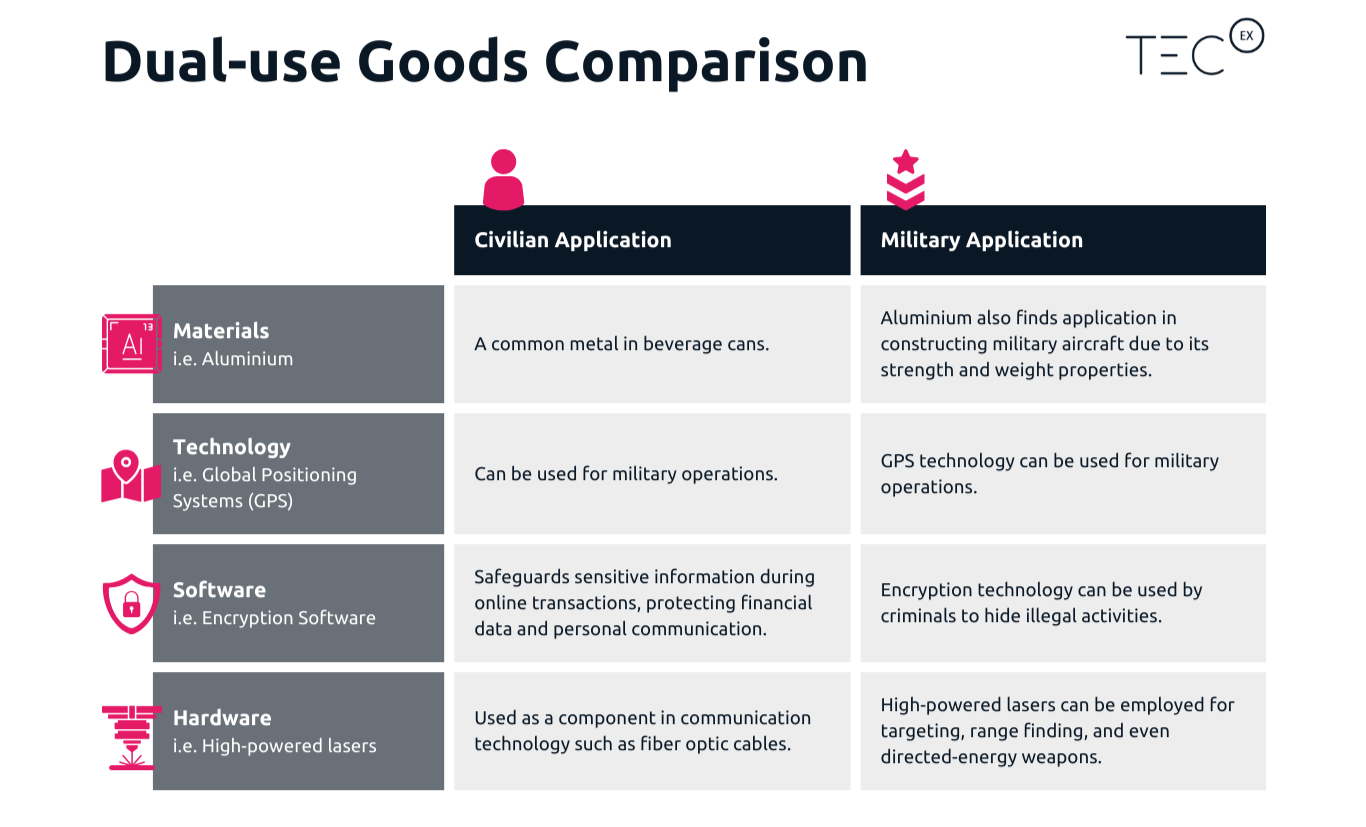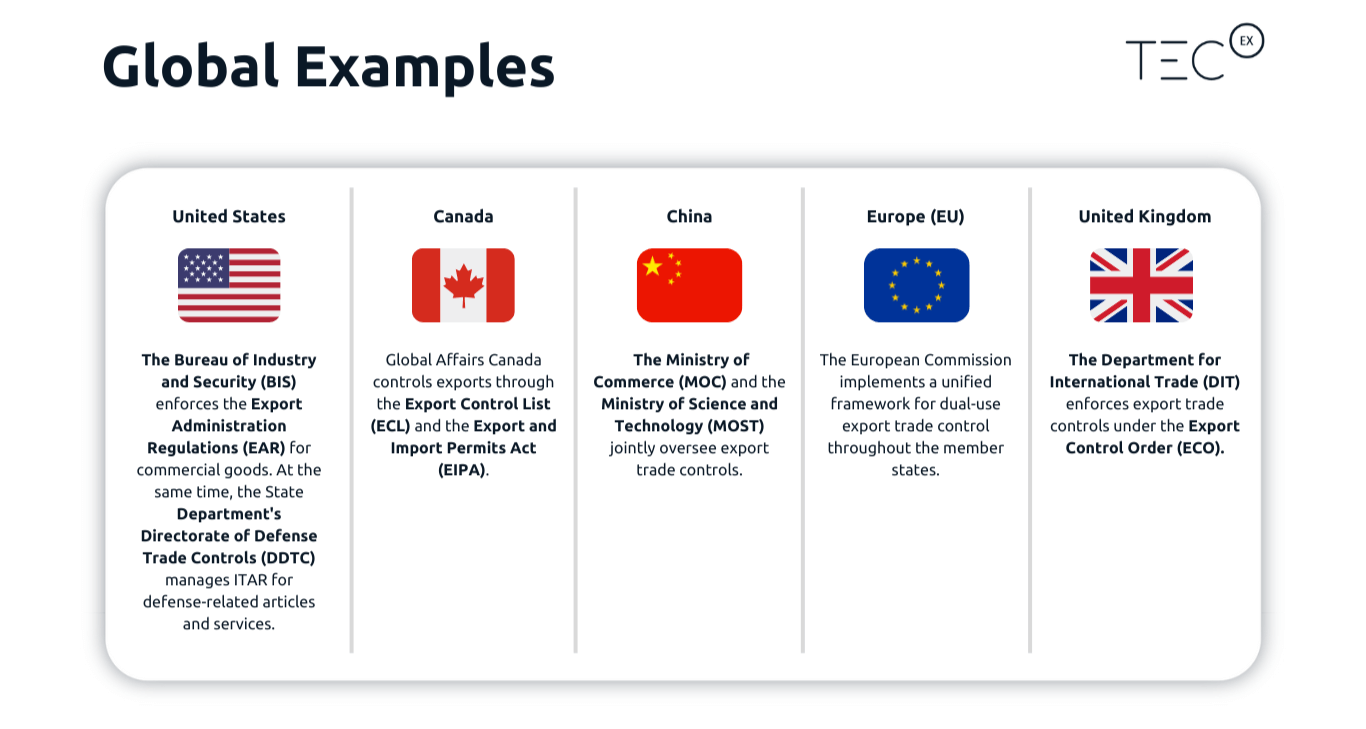Dual-use exports represent a significant portion of international trade. For example, in the European Union (EU) alone, dual-use items accounted for roughly 2.5% of total exports in 2021, with a value of around €147 billion. And yet, not all dual-use exports are freely permitted. The EU processed applications for dual-use trade valued at €45.5 billion in 2021, with 568 applications being denied. This suggests a high approval rate but highlights the importance of ensuring proper trade compliance through licensing procedures.
Dual-use goods present a complex situation in the global trade landscape. These seemingly ordinary items possess the potential for both civilian and military applications. This very characteristic creates a constant push and pull for international trade in an effort to prevent malicious use and facilitate healthy economic activity. Understanding this interplay between economic interests and security concerns is crucial in grasping the complexities surrounding dual-use goods in global trade.
What are Dual-Use Goods?
Dual-use goods are items that have both civilian and military applications. These goods can be beneficial for everyday life, but they also have the potential to be misused for harmful purposes.
While they bring significant advancements to various sectors, their inherent military potential necessitates strict regulations to prevent misuse. Understanding these products’ duality is essential for coming to terms with their intense regulation. On the one hand, dual-use goods cater to everyday needs and drive innovation in numerous fields. On the other hand, the properties that make these goods beneficial for civilian use can be adapted for military purposes.

Dual-Use Technologies, The Commerce Control List (CCL), and EAR99 Classification
What is the Difference Between ECCN Codes, EAR99 Classification, and ITAR Classification?
All three – ECCN codes, EAR99, and ITAR – are related to export trade controls in the US, but they govern different categories of items and are managed by separate agencies:
What is an EAR99 Classification?
EAR99 is the classification for items that do not (in most cases) need an export license. This applies mostly to low-technology consumer goods due to their basic specifications. However, careful diligence is still required of the exporter in these instances to ensure that goods are not entering an embargoed country or end-use, in which case an export license may be required.
What is an ITAR Classification?
The International Traffic in Arms Regulations (ITAR) is the United States regulation that controls the manufacture, sale, and distribution of defense and space-related articles and services as defined in the United States Munitions List (USML) – which only US citizens can access. ITAR exists to track military and defense-sensitive material and to keep that material out of the hands of U.S. enemies.
| Code | Administered By | Covers | Examples |
|---|---|---|---|
| ECCN | Department of Commerce (BIS) | Dual-Use Items on the Commerce Control List (CCL). | High-performance computers, encryption software. |
| EAR99 | Department of Commerce (BIS) | Items not on the CCL but require some export controls. | Certain types of civilian aircraft, some chemicals. |
| ITAR | Department of State | Defense Articles and services. | Firearms, ammunition, fighter jets. |
Why are Dual-use Technologies Important?
In essence, dual-use technologies are a double-edged sword in global trade. While they offer significant economic advantages and contribute to technological progress, mitigating the risks of proliferation necessitates careful monitoring and international cooperation.
What are the Complexities Associated With Dual-Use Goods?
Dual-use goods, with their civilian and military applications, present a multitude of challenges. By acknowledging these complexities and implementing effective solutions, a more secure and balanced approach to managing dual-use goods can be achieved.
These risks include:
The balancing act of trade and security
Striking a balance between promoting economic activity through trade and safeguarding national security is a constant struggle. Strict regulations can hinder legitimate businesses, while lax controls can enable the proliferation of dangerous technologies.
Vastly different regulations around the world
The absence of a universally standardized approach to controlling dual-use goods creates a complex landscape. Countries often have varying regulations and enforcement capabilities, making it difficult to ensure a consistent level of control.
The dilemma of evolving technologies and their evolving regulations
Rapid technological advancements constantly blur the line between civilian and military applications (think AI!). What might be a common item today could hold significant military potential in the future. Keeping pace with this evolution and adapting regulations is a considerable challenge.
The profound enforcement challenges
Effectively monitoring and enforcing trade controls requires substantial resources and international cooperation. Diverting resources towards thorough inspections can be costly, and coordinating efforts across various countries with potentially differing priorities further complicates enforcement.
The risks of diversion
Malicious actors can exploit loopholes or weaknesses in the system to divert dual-use goods for unauthorized military purposes. This can be achieved through deceptive practices like falsifying documentation or using seemingly legitimate companies as fronts.
The challenge of accurate classification
Accurately classifying items as dual-use or not can be intricate. Grey areas often exist, requiring ongoing assessment based on evolving technologies and potential applications.
Enter Export Control Classification Numbers (ECCNs) – these unique five-character codes pinpoint dual-use goods. While ECCNs categorize controlled items, the challenge lies in identifying them within trade documents that might not explicitly mention these codes. Read more about them here.
In the technology space, there are an astronomical amount of goods are classified as dual-use. Encryption software, for example, can be used for secure communication and concealing illegal activities. The ECCN assigned would indicate the export restrictions based on the software’s capabilities and potential misuse.
Additionally, Items such as cables, server racks, microchips, semiconductors, CPUs (Central Processing Units), Graphics Processing Units (GPU), and batteries are not merely characterized as tech goods. Instead, they require significant time and processes to export as items are categorized as dual-use.
Furthermore, with the rise of Artificial Technology (AI), dual-use technology is in increasing demand to keep up to date with evolving technologies. This is particularly pertinent for rapidly developing technology environments such as China or the US. CPUs and GPUs are at the center of this type of technology, which means increased export requirements for companies looking to build their AI infrastructure.
While ECCNs provide a crucial classification system for dual-use goods, it’s vital to acknowledge the role of bodies such as the International Traffic in Arms Regulations (ITAR) in trade controls.
What are the Consequences of Incorrectly Classifying Dual-Use Goods?
Mistakes in categorizing dual-use goods unleash a terrifying chain of consequences, plunging exporters into a nightmarish abyss of high stakes. The mere act of misclassification can initiate a domino effect, shrouding shipments in delays and uncertainty during export. Authorities, suspicious of the misstep, hold shipments with extended scrutiny, mercilessly disrupting business operations and potentially causing financial losses.
Secondly, hefty fines can be imposed for non-compliance with trade control regulations. This financial burden can significantly impact businesses involved in the export of such goods. The added financial burden can reduce profitability, increase operational costs, and even cause reputational damage.
However, the potential for mishap doesn’t stop there. Misclassification can result in the seizure of the goods by authorities. This not only leads to lost inventory but also poses a significant financial setback for the involved parties. Additionally, seizures can lead to forced storage (which is pricey) or the potential to have demurrage charges imposed on shipments.
Centrally, the misclassification of dual-use goods poses a significant threat to national security. Inaccuracies in categorization become a gateway for sensitive technologies and materials to fall into the wrong hands, unleashing potentially catastrophic ripple effects and national security implications. This potential misuse could empower hostile actors or even fuel the proliferation of weapons of mass destruction.
In this precarious landscape, a major beacon of hope is the imperative of ensuring accurate classification. Consulting with relevant authorities and rigidly adhering to compliance guidelines becomes not just a necessity but a lifeline, warding off potential mishaps that hover over the perilous world of dual-use goods.
Who Controls Dual-Use Products?
Various government bodies are responsible for their trade control regulations to manage the movement of dual-use goods. Government agencies, often under the Departments of Commerce, trade, or Foreign Affairs, are responsible for enforcing these regulations.
These regulations outline:
- Classification Systems: Methods for identifying dual-use goods (e.g., ECCNs in the US).
- Licensing Requirements: Procedures for obtaining export licenses for controlled items.
- Trade Controls: Restrictions on specific destinations, end-users, and technologies.
- Monitoring Procedures: Mechanisms to track the movement of dual-use goods and prevent misuse.
Ultimately, Individual countries establish regulations outlining the licensing requirements, trade controls, and monitoring procedures for dual-use items.

While there’s a general framework for controlling dual-use goods, specific regulations and control mechanisms can vary significantly across countries. Factors like national security concerns, foreign policy objectives, and industrial capabilities influence the stringency of export trade control measures.
Ultimately, the concept of a single, universally adopted set of “global standards” for controlling dual-use goods doesn’t currently exist. Although international cooperation strives for harmonization, achieving complete uniformity across all countries is challenging due to varying priorities and economic considerations.
What Do You Do If You Need to Import/Export Dual-Use Technologies?
Importing and exporting dual-use technologies, which have both civilian and military applications, presents a complex maze of regulations and potential risks. Navigating export trade controls, International Traffic in Arms Regulations (ITAR), EAR (Export Administration Regulations), and country-specific requirements is daunting. Strict regulations govern these transactions, with hefty penalties for non-compliance.
To mitigate the risks, partner with an export and trade compliance expert such as TecEx with in-depth knowledge of:
- Accurately classifying products using ECCN,
- Obtaining the necessary POAs, licenses and permits for specific destinations,
- Understanding the intricate web of international trade agreements and sanctions,
- Choosing the appropriate delivery terms (incoterms) to manage responsibilities and costs, and
- Ensuring adherence to international packaging and shipping regulations.
Contact Us and Get Compliant!
Working with TecEx is a proactive approach to shipping dual-use goods that safeguards your global tech shipments from potentially devastating repercussions. Our expertise ensures smooth international trade operations, allowing you to focus on growth and expansion.

